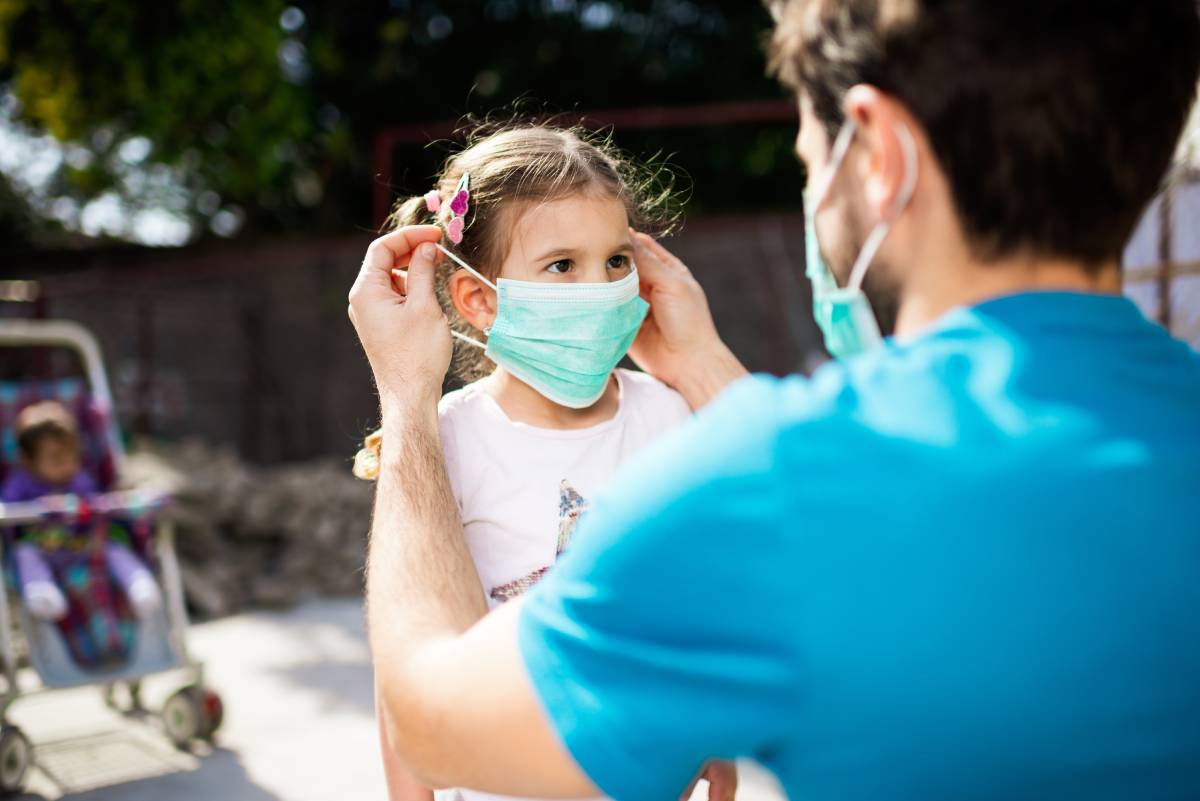The Impact of COVID-19 on School-Age Children: Current Research

In current research, COVID-19 mortality and hospitalization in school-age children appears relatively low.1 However, current research also finds school-age children particularly vulnerable to the psychosocial impacts of the COVID-19 pandemic. Optimal growth and child development flourish in environments that promote stability and balance – which the pandemic environment does not. Rather, experts are classifying the pandemic as an adverse childhood experience (ACE). ACEs generate toxic stress for children that detrimentally affects brain development, mental and physical health, long-term cognition, and future productivity – often through modifications to genetic predispositions.2
The support that children receive in these ACEs determines whether such stress remains tolerable or becomes toxic. If children receive appropriate care, security, and support, the body is better able to biochemically regenerate and return to normal physiological function without permanent damage. Non-existent or inadequate support, however, impedes the body’s ability to return to basal functionality and develop proper brain architecture.2
The COVID-19 pandemic uniquely increases toxic stress on school-age children and disrupts childhood stability and security. Currently, children must weather social isolation, lifestyle adaptations, financial instability, illness-related worries, and consistent uncertainty.2,3 Simultaneously, the pandemic hampers children’s access to potential support networks: friends, family, teachers, counselors, and physicians, to name a few. The pandemic-induced isolation amplifies the psychosocial stress that children experience and makes it more difficult for children to find the support they need.3 One study, for example, found that quarantined children reported stress levels four times greater than children whose families maintained normal routines.4
Experts warn that the COVID-19 pandemic likely triggers adolescent mental illness and that mental health repercussions will last long after COVID-19 abates.3 Substantial research suggests a link between toxic stress and the spectrum of mental illness, particularly post-traumatic stress disorders, anxiety disorders, depression, and self-harm tendencies.2,3,5,6 Only cross-sectional research currently exists on COVID-19-related mental health, and even fewer studies focus on school-age children.
Early research from China indicates a higher than normal prevalence of mental illness symptoms – depression and anxiety symptoms in particular – in adolescents during the COVID-19 pandemic.7 Similarly, U.K.-based charity Young Minds surveyed people under 25 with a history of mental illness both in spring and summer 2020.8,9 The summer survey found that 41% of participants reported that the pandemic made their mental health “much worse” – up from 32% in the spring. In addition, more than 1/3 of adolescents report high levels of loneliness during the pandemic.8,10 Loneliness, like toxic stress, also displays well-established links to mental illness, especially depression and anxiety.5
The pandemic confers more than a psychological burden upon school-age children. Pandemic-induced lifestyles typically sway children towards sedentary behavior, irregular sleep patterns, imbalanced diets, and longer screen time.2,3 If sustained, these changes may increase childhood obesity and reduce adolescent cardio-respiratory fitness in the future. School closures, in particular, also increase risk for child abuse, educational drop-out, high-risk behaviors, and child labor.3 COVID-19-specifc data shows a rise in child abuse, neglect, exploitation, and domestic violence so far in the pandemic.11,12 Experts also expect school closures to increase the educational attainment gap between lower- and higher-income families.3
The World Health Organization provides recommendations on how best to support adolescents during the pandemic.13 Broadly, experts recommend that guardians promote reassurance, offer appropriate information, and encourage children to partake in stress-reducing activities and actions.5 Singh et al. detail specific advice for support provisions that breaks down recommendations by target group and support system.7 If well-supported, many adolescents possess the capacity for resilience and the ability to cope with the pandemic.
References
1. Leeb, R. T. COVID-19 Trends Among School-Aged Children — United States, March 1–September 19, 2020. Morb. Mortal. Wkly. Rep. 69, (2020). doi:10.15585/mmwr.mm6939e2.
2. de Araújo, L. A., Veloso, C. F., Souza, M. de C., Azevedo, J. M. C. de & Tarro, G. The potential impact of the COVID-19 pandemic on child growth and development: a systematic review. J. Pediatr. (Rio J.) (2020). doi:10.1016/j.jped.2020.08.008.
3. Ghosh, R., Dubey, M. J., Chatterjee, S. & Dubey, S. Impact of COVID -19 on children: special focus on the psychosocial aspect. Minerva Pediatr. 72, (2020). doi:10.23736/S0026-4946.20.05887-9.
4. Sprang, G. & Silman, M. Posttraumatic Stress Disorder in Parents and Youth After Health-Related Disasters. Disaster Med. Public Health Prep. 7, 105–110 (2013). doi:10.1017/dmp.2013.22.
5. Loades, M. E. et al. Rapid Systematic Review: The Impact of Social Isolation and Loneliness on the Mental Health of Children and Adolescents in the Context of COVID-19. J. Am. Acad. Child Adolesc. Psychiatry 59, 1218-1239.e3 (2020). doi:10.1016/j.jaac.2020.05.009.
6. Singh, S. et al. Impact of COVID-19 and lockdown on mental health of children and adolescents: A narrative review with recommendations. Psychiatry Res. 293, 113429 (2020). doi:10.1016/j.psychres.2020.113429.
7. Xie, X. et al. Mental Health Status Among Children in Home Confinement During the Coronavirus Disease 2019 Outbreak in Hubei Province, China. JAMA Pediatr. 174, 898–900 (2020). doi:10.1001/jamapediatrics.2020.1619.
8. YoungMinds. Coronavirus: Impact on Young People with Mental Health Needs, Spring. (2020). https://youngminds.org.uk/media/3708/coronavirus-report_march2020.pdf.
9. YoungMinds. Coronavirus: Impact on Young People with Mental Health Needs, Summer. (2020). https://youngminds.org.uk/media/3904/coronavirus-report-summer-2020-final.pdf.
10. Fox, E., Parsons, S., Todorovic, A., Songco, A. & Lim, M. Oxford ARC Study: Achieving Resilience During COVID-19. (2020). https://oxfordarcstudycom.files.wordpress.com/2020/05/oxfordarcstudy_report_1-1.pdf.
11. Taub, A. A New Covid-19 Crisis: Domestic Abuse Rises Worldwide. The New York Times (2020). https://www.nytimes.com/2020/04/06/world/coronavirus-domestic-violence.html.
12. COVID-19: Children at heightened risk of abuse, neglect, exploitation and violence amidst intensifying containment measures. UNICEF. (2020). https://www.unicef.org/press-releases/covid-19-children-heightened-risk-abuse-neglect-exploitation-and-violence-amidst.
13. World Health Organization. Coping with stress during the 2019-nCoV outbreak. (2020). https://www.who.int/docs/default-source/coronaviruse/coping-with-stress.pdf.